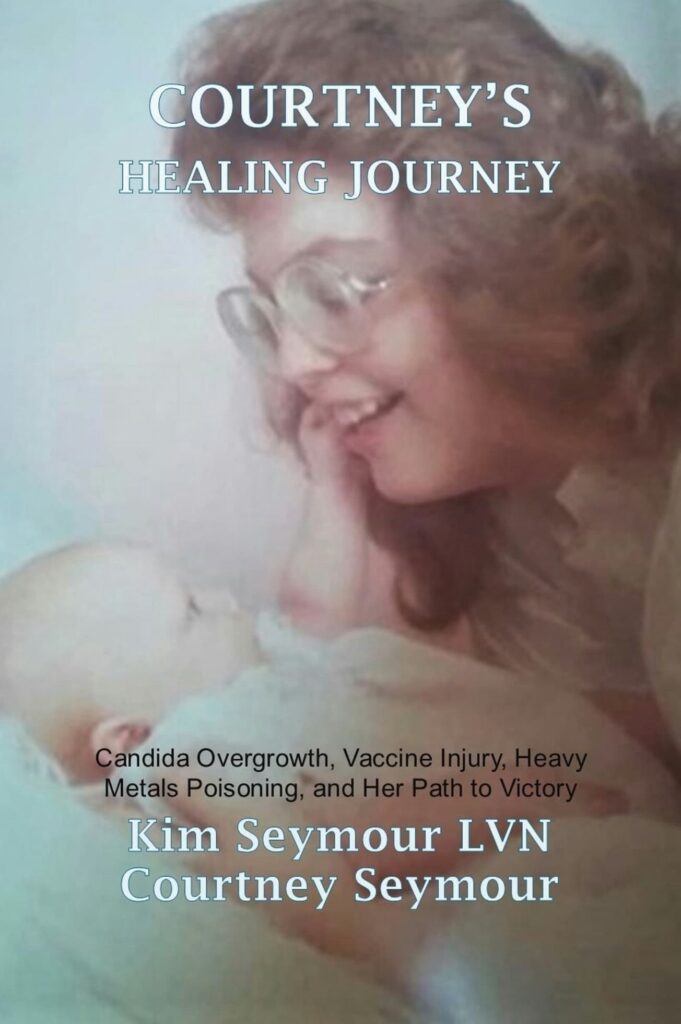Lead Toxicity
I’m sorry to inform you that everyone, even newborns, is lead toxic due to lead being added to gasoline and emitted from automobiles for decades. Lead causes fatigue and can potentially cause irreversible damage to the nervous, reproductive, and renal systems and the liver. That’s why I’m here to teach you how to detox it.
Lead is extremely toxic to humans. Exposure usually happens quietly, without you realizing it, and the potentially damaging effects – primarily to the brain – are sometimes irreversible.
One of the most common consequences of lead toxicity is high blood pressure due to lead accumulation in the kidneys. When the lead is detoxed, people often see a normalizing of their blood pressure.
Lead is Stored in Our Bones
Lead accumulates in our bones. This is done by the body in an effort to protect vital organs. From there, it is released into the blood stream.
Women’s bones release lead more slowly into the blood stream than men’s. Meaning, lead can continue to be released into the blood long after exposure. This is of particular importance for women who are pregnant, as the slower release of lead from the bones could negatively impact a developing fetus.
Once women reach menopause, they have faster bone cell turnover due to lowered estrogen levels. Lead begins leaching into their bodies from the breakdown of bone tissue. Symptoms like fatigue and brain fog begin to occur due to lead toxicity.
How Are You Exposed to Lead?
Unfortunately, lead is almost everywhere. No one can completely avoid it. Too much exposure to this toxic metal places more pressure on our already over-burdened systems that are busy fighting off all the other toxins from our modern-day, industrial environment. That’s why you need to know it’s sources so that you can take steps to protect yourself and your family.
Lead is in the air due to coal combustion and fossil fuels. We breathe it in. While leaded gasoline is no longer used in the United States, if you live or travel to a developing country that does not use unleaded gasoline, you must be aware! You are breathing in neurotoxic lead!
Unfortunately, lead persists for 500 to 1000 years in the environment. So, even though we no longer use leaded gasoline in the U.S., this deadly metal can still be found in the soils where it then gets into our food and water.
Yes, soil may be contaminated with lead sediment due to industrial or automobile exhausts, especially in densely populated areas. Growing your own vegetables under those circumstances is not recommended.
In China, the rapid economic development has led to alarmingly elevated lead levels being released into environment due to the mineral processing activities. As a result, lead has made its way into the country’s water, soil, crops, and vegetable supplies and the levels in China are much higher than other developed countries.
Water pipes used to be made of lead and many still are. They can leak lead into drinking water and contribute to toxicity that way.
Lead is also found in your beauty products. Yes, you are likely putting lead on your face daily to beautify yourself. Cosmetics, especially lip stick and mascara, have been found to contain shocking levels of lead. Be sure to buy lipstick that has been certified to be free of lead.
Lead was commonly used in house paint until the 1970’s. In 1978, lead-based residential paint was banned from use in the United States. But, unfortunately, an estimated 30-50% of the population lives in houses built before that time. If you belong to this group, you are at greater risk of inhaling miniscule paint chips and dust containing lead, and this can lead to lead toxicity.
Attention parents: Lead is the most common toxicant found in the drinking water of U.S. schools, via water fountains, coolers, and other water outlets. Another danger is lead-based paint, as it is the most common source of exposure for children under 6 years of age who have suffered lead poisoning.
You need to know these and the other widespread sources of lead so that you can identify how it is entering your body. These sources include:
- Ammunition
- Auto exhaust
- Batteries and battery manufacturing
- Candle Wicks (it’s safer to diffuse essential oils! My ID # is 12668940)
- Ceramics
- Cigarette smoke (Stop smoking with this!)
- Coal combustion
- Colored inks
- Cosmetics
- Root canals
- Eating utensils
- Electroplating
- Farm equipment
- Gasoline
- Glass production
- Glazes for pottery
- Herbs, especially from India and China
- Hair dyes, especially black
- Industrial emissions
- Jewelry making
- Lead pipes
- Lead-glazed earthenware pottery
- Mascara
- Meat (if lead shot was used to kill it)
- Metal polish
- Milk
- Newsprint
- Occupational exposure
- Paint
- Pencils
- Pesticide residues
- PVC pipes
- Smelters
- Solders
- Soil
- Supplements containing herbs from India and China (I get our supplements through Plexus.)
- Cans with lead solder sealing (such as juices, vegetables)
- Toothpaste (We use toothpaste from Young Living. My ID # is 12668940.)
- Water (city/well/tap) (We have a Kangen K8 clean water machine. My ID # is 7322664, my name is Kim Seymour, and my email is kimberlyseymour@proton.me)
Knowing all of this, it’s not hard to see how we are exposed to lead in our daily lives, often without realizing it!
What are the Symptoms of Lead Toxicity in Children?
Children are particularly susceptible to the dangers of lead. The adverse health effects of this dangerous metal will be more pronounced in them.
There is NO SAFE level of lead exposure for children. Exposure to lead – be it in childhood, infancy, or even in utero – is especially damaging and toxic to a developing nervous system.
In fact, it has been proven that there is a direct link between, “low-level lead exposure during early development and deficits in neurobehavioral-cognitive performance evident late in childhood through adolescence”. Lead poisoning in children can lead to such things as brain damage, low IQ, developmental delays, hyperactivity, and even hearing loss.
Some of the primary symptoms of lead toxicity include:
- Loss of memory
- Loss of Vision
- Cognitive and behavioral problems
- Brain damage
- Mental retardation
- Antisocial behavior
- Violence
- Delays in growth and pubertal development
What Health Conditions are Caused by Lead?
Like many metals, the main target for lead toxicity is the central nervous system (CNS). But it’s toxic effects don’t end there; lead also affects the immune, renal, reproductive, and hematopoietic (stem cell) systems. Lead toxicity also causes oxidative stress, which then leads to free radical damage. It is a truly dangerous metal.
Let’s start with its effects on the CNS. Lead is a potent neurotoxin that can cause learning and behavioral impairments, especially in young children. Exposure to it may result in detrimental effects to both brain development and function.
It has also been found that exposure to lead early in life may cause neurode-generation in later life.
I mentioned that lead also affects hormone production. Lead has endocrine disrupting properties (EDCs), which interrupts hormone regulation in the body. Among the hormone activities it interrupts, lead has been shown to inhibit progesterone and impair prolactin production in females; these imbalances can lead to irregular periods.
Lead builds up in the ovaries, which then causes delays in both growth and development during puberty, as well as reduced fertility cells of the ovary, causing delays in growth and pubertal development and reduced fertility in females. For males, lead negatively affects growth during puberty. A 2017 study found that lead toxicity directly impairs sperm function and may lead to such things as low sperm count or testicular degeneration.
Exposure to lead may also bring about a deregulation of the immune system, along with reduced immunosurveillance. Immunoserveillance is critical because it is the process by which the body’s cells scan for foreign pathogens – including toxins and chemicals – as well as for pre-cancerous and cancerous cells.
These are a few of the health conditions which may result from lead toxicity:
- Mitochondrial damage
- Abdominal pain
- Adrenal insufficiency
- Aggression
- Allergies
- Alzheimer’s
- Anemia
- Anorexia
- Anxiety
- Arthritis (oust and rheumatoid)
- Arteriosclerosis
- Attention deficit disorder (ADD)
- Autism
- Back pain/problems
- Behavioral disorders
- Blindness
- Cancer
- Cardiovascular disease
- Cataracts
- Cartilage destruction
- Concentration loss
- Constipation
- Convulsions
- Coordination loss
- Deafness
- Dementia
- Depression
- Diabetes
- Disrupts neurotransmitters
- Dyslexia
- Emotional instability
- Encephalitis
- Epilepsy
- Fatigue
- Gout
- Hallucinations
- Headaches
- High blood pressure
- Hostility
- Hyperactivity
- Hypertension
- Hypo-thyroid
- Impaired glycogen storage
- Impotency
- Immune suppression
- Indigestion
- Infertility or reduced fertility
- Inflammation
- Insomnia
- Intellectual loss
- Irritability
- Joint pain
- Kidney dysfunction
- Learning disabilities
- Libido decrease
- Liver dysfunction
- Low IQ
- Memory loss (long term)
- Mental retardation
- Menstrual problems
- Miscarriage
- Multiple sclerosis
- Myelopathy (Spinal cord pathology)
- Nausea
- Nephritis
- Nightmares
- Numbness
- Paralysis
- Parkinson’s disease
- Peripheral neuropathies
- Psychosis
- Psychomotor dysfunction
- Pyorrhea
- Red blood cell damage
- Renal dysfunction
- Restlessness
- Schizophrenia
- Seizures
- Sterility
- Stillbirths
- Sudden infant death syndrome (SIDS)
- Tingling
- Tooth decay
- Vertigo
- Violence and aggression
- Unintentional weight loss
How do You Support Your Body’s Natural Detox Mechanisms to Eliminate and Protect Against Contaminants?
The most serious and harmful effects of lead exposure are often irreversible. However, you can reduce the toxic effects of this dangerous metal by reducing your exposure in the first place and supporting your body’s natural ability to detox harmful pollutants. Arm yourself with knowledge that will protect both the health of you and your loved ones!
An antagonist is an element that can boost your body’s ability to detox a contaminant out of the body. The following elements can help facilitate the body’s natural excretion of the lead from your system:
- Vitamin C
- Vitamin E
- 3-dimercaptosuccinic acid (DMSA) – DMSA is a sulfur-containing organic compound that is FDA approved for the treatment of lead and mercury toxicity both in children and adults
- EDTA
- Cilantro/Coriander seed oil
- Taurine
Detecting Lead Toxicity
If you suspect you may have high levels of lead in your system, I recommend a test to determine your level of exposure.
A Toxic Metals 24 Hour Urine. Urine toxic analysis is an invaluable tool for the assessment of retention of toxic metals in the body. Toxic metals do not have any useful physiological function, adversely affect virtually every organ system and disrupt the balance of nutrient elements.
The Toxic Metals 24 Hour Urine testing process is simple (you don’t even need to leave your house). Testing is both accurate and comprehensive –– a Toxic Metals 24 Hour Urine test will give you information about a wide variety of heavy metals.
Once you have your Toxic Metals 24 Hour Urine test results, you can send them to me, your Holistic Health Coach, and I will coach you through your plan to support your body’s natural detoxification. You can connect with me here.
If you think you’ve been exposed to health hazards like lead and it may be hiding in your system, order a Toxic Metals 24 Hour Urine test. From there, together, we can plan your next steps to reclaim your vitality.
A Toxic Metals 24 Hour Urine test is a far more reliable method for determining lead toxicity. The reason a urine test is so useful and provides meaningful results is that urinary excretion is the major route for the elimination of lead.
With love and purpose,
Kim Seymour LVN, Holistic Health Coach

Grab your copy of “Courtney’s Healing Journey” by clicking here today!

Referrences:
- Group, Dr. Edward. “Toxic Metal: The Health Dangers of Lead.” Global Healing Center. Published on January 22, 2013, Last Updated on September 11, 2013. http://www.globalhealingcenter.com/natural-health/toxic-metal-health-dangers-lead/
- Talia Sanders, Yiming Liu, Virginia Buchner, and Paul B. Tchounwou. “Neurotoxic Effects and Biomarkers of Lead Exposure: A Review.” Rev Environ Health. 2009 Jan–Mar; 24(1): 15–45. https://www.ncbi.nlm.nih.gov/pmc/articles/PMC2858639/
- Vigeh M, Saito H, Sawada S. Lead exposure in female workers who are pregnant or of childbearing age. Ind Health. 2011;49(2):255-61. Epub 2010 Dec 16. https://www.ncbi.nlm.nih.gov/pubmed/2117352
- Luo W, Ruan D, Yan C, Yin S, Chen J. Effects of chronic lead exposure on functions of nervous system in Chinese children and developmental rats. Neurotoxicology. 2012 Aug;33(4):862-71. doi: 10.1016/j.neuro.2012.03.008. Epub 2012 Apr 6. https://www.ncbi.nlm.nih.gov/pubmed/22504049
- Brown MJ, Margolis S. Lead in drinking water and human blood lead levels in the United States. MMWR Surveill Summ. 2012 Aug 10;61 Suppl:1-9. Review. https://www.ncbi.nlm.nih.gov/pubmed/22874873
- Lambrinidou Y, Triantafyllidou S, Edwards M. Failing our children: lead in U.S. school drinking water. New Solut. 2010;20(1):25-47. doi: 10.2190/NS.022010eov. https://www.ncbi.nlm.nih.gov/pubmed/20359990
- Centers for Disease Control and Prevention (CDC). Lead poisoning of a child associated with use of a Cambodian Amulet — New York City, 2009. MMWR Morb Mortal Wkly Rep. 2011 Jan 28;60(3):69-71. https://www.ncbi.nlm.nih.gov/pubmed/21270744
- Public Citizen. “Millions of Dangerous Candles Sold Throughout U.S.
Lead Wicks Pose Major Safety Hazard, Especially to Children.” Feb. 24, 2000. http://www.citizen.org/pressroom/pressroomredirect.cfm?ID=434 - Park, Alice. “Study” Lead Poisoning Could Lurk in Spices.” Time Magazine. March 15, 2010. http://content.time.com/time/health/article/0,8599,1971906,00.html
- Karrari P, Mehrpour O, Abdollahi M. A systematic review on status of lead pollution and toxicity in Iran; Guidance for preventive measures. Daru. 2012;20(1):2. doi: 10.1186/1560-8115-20-2. Epub 2012 Jul 19
- Filippelli GM, Laidlaw MA. The elephant in the playground: confronting lead-contaminated soils as an important source of lead burdens to urban populations. Perspect Biol Med. 2010 Winter;53(1):31-45. doi: 10.1353/pbm.0.0136. https://www.ncbi.nlm.nih.gov/pubmed/20173294
- Silbergeld EK. “Drinking Water and the Developing Brain.” Cerebrum. 2016 Jul 1;2016https://www.ncbi.nlm.nih.gov/pubmed/28058090
- Howarth D. Lead exposure–implications for general practice. Aust Fam Physician. 2012 May;41(5):311-5. https://www.ncbi.nlm.nih.gov/pubmed/22558623
- Doumouchtsis KK, Doumouchtsis SK, Doumouchtsis EK, Perrea DN. “The effect of lead intoxication on endocrine functions.” J Endocrinol Invest. 2009 Feb. https://www.ncbi.nlm.nih.gov/pubmed/19411819
- Clarkson TW. “Metal Toxicity in the central nervous system.” Environ Health Perspect. 1987 Nov;75:59-64https://www.ncbi.nlm.nih.gov/pubmed/3319566
- Flora G, Gupta D, Tiwari A. Toxicity of lead: A review with recent updates. Interdiscip Toxicol. 2012 Jun;5(2):47-58. doi: 10.2478/v10102-012-0009-2. https://www.ncbi.nlm.nih.gov/pubmed/23118587
- García-Lestón J, Roma-Torres J, Mayan O, Schroecksnadel S, Fuchs D, Moreira AO, Pásaro E, Méndez J, Teixeira JP, Laffon B. Assessment of immunotoxicity parameters in individuals occupationally exposed to lead. J Toxicol Environ Health A. 2012;75(13-15):807-18. doi: 10.1080/15287394.2012.690327. https://www.ncbi.nlm.nih.gov/pubmed/22788368
- Ishida K, Kotake Y, Sanoh S, Ohta S. “Lead-Induced ERK Activation Is Mediated by GluR2 Non-containing AMPA Receptor in Cortical Neurons.” Biol Pharm Bull. 2017. https://www.ncbi.nlm.nih.gov/pubmed/28250271
- Devi CB, Reddy GH, Prasanthi RP, Chetty CS, Reddy GR. “Developmental lead exposure alters mitochondrial monoamine oxidase and synaptosomal catecholamine levels in rat brain.” Int J Dev Neurosci. 2005 Jun;23(4):375-81. https://www.ncbi.nlm.nih.gov/pubmed/15927761
- Joseph P. Dressler, Gary W. Goldstein. “Mechanisms of lead neurotoxicity.” Biochemical Pharmacology. Volume 41, Issue 4, 15 February 1991, Pages 479-484. http://www.sciencedirect.com/science/article/pii/000629529190617E
- Sergeyev O, Burns JS, Williams PL, Korrick SA, Lee MM, Revich B, Hauser R. “The association of peripubertal serum concentrations of organochlorine chemicals and blood lead with growth and pubertal development in a longitudinal cohort of boys: a review of published results from the Russian Children’s Study.” Rev Environ Health. 2017 Feb 23. https://www.ncbi.nlm.nih.gov/pubmed/28231067
- Gandhi J, Hernandez RJ, Chen A, Smith NL, Sheynkin YR, Joshi G, Khan SA. “Impaired hypothalamic-pituitary-testicular axis activity, spermatogenesis, and sperm function promote infertility in males with lead poisoning.” Zygote. 2017 Feb 10.
https://www.ncbi.nlm.nih.gov/pubmed/28185602 - Parr, D.R. and Eric Harris. “Effects of Sucrose and Dextran on the Toxicity of Lead to Mitochondria in the Presence of Inorganic Phosphate in vitro.” Department of Biophysics, University College London, Gower Street, London WCIE 6BT, U.K.http://www.biochemsoctrans.org/content/ppbiost/3/6/951.full.pdf
- A.M. Watrach. “Degeneration of mitochondria in lead poisoning.” Journal of Ultrastructure Research. Volume 10, Issues 3–4, April 1964, Pages 177-181. http://www.sciencedirect.com/science/article/pii/S0022532064800010
- Zeqiri N, Zeqiri S, Skenderaj S. Blood pressure evaluation at the workers exposed to lead. Med Arh. 2012;66(2):92-3. https://www.ncbi.nlm.nih.gov/pubmed/22486137
